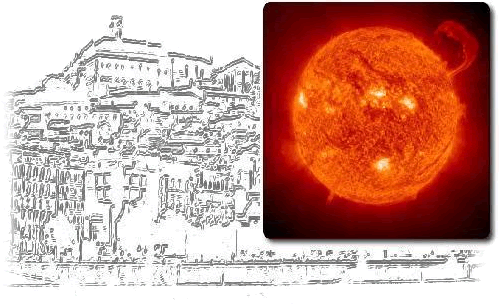|
|
|
|
|
|
|
|
|
|
|
|
|
Lilia Biktash, Mrs. - Dr. |
|
IZMIRAN, Troitsk, Moscow, Russia |
|
|
|
|
|
|
|
Session 4 - Poster |
|
Sun and space weather influence on global temperature by the agency of cosmic rays during the solar cycles 19-23 |
|
L. Biktash, IZMIRAN, Troitsk, Moscow, Russia |
|
|
|
We have studied conditions on the sun and in interplanetary space, which
can have an influence on solar and galactic cosmic rays (CR) and climate change. In
this connection the solar wind and interplanetary magnetic field parameters and
cosmic ray variations have been compared with geomagnetic activity represented by
the equatorial Dst index from the beginning 1965 to the end 2012. The important
drivers in interplanetary medium which have effect on cosmic rays as CMEs (coronal
mass ejections) and CIRs (corotating interaction regions) undergo very strong
changes during their propagation to the Earth. Because of this the sunspot numbers
(SSN) do not adequately reflect peculiarities concerned with the solar wind arrival
to 1 AU. Therefore, the geomagnetic indices have some inestimable advantage as
continuous series other the solar wind measurements. We have compared the yearly
average variations of Dst index and the solar wind parameters with cosmic ray data
from Moscow, Climax, Haleakala and Oulu neutron monitors during the solar cycles 19-23.
During the descending phases of these solar cycles (CSs) the long-lasting solar
wind high speed streams occurred frequently and were the primary contributors to
the recurrent Dst variations. They also had effects on cosmic rays variations but
were not reflected by SSN. We show that long-term Dst variations in these solar
cycles were correlated with the cosmic ray count rate and can be used for
prediction of CR variations. Climate change in connection with evolution of Dst
index and CR variations is analyzed. We show that CRs play essential role in
climate change and main part of climate variations can be explained by the
mechanism of action CRs modulated by the solar activity on the state of lower
atmosphere and meteorological parameters. |
|
|
|
|
|
|
|




 









 |



